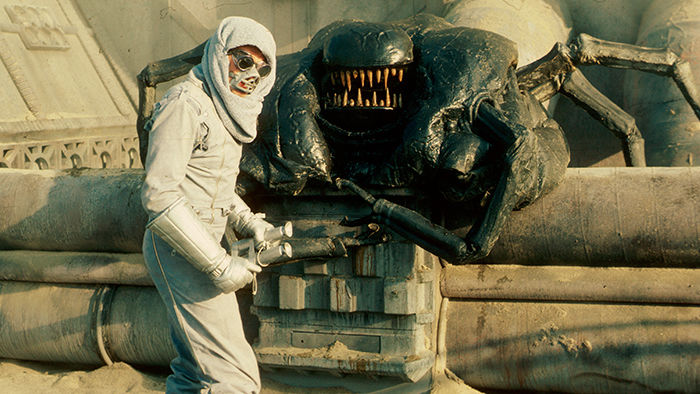
When Alien was released in 1979, cinema-going audiences had a similar reaction to the crew of the Nostromo when a phallic monster with sharp teeth burst suddenly from their crew-mate’s chest and scurried away: they were shocked.
With its simple plot about a doomed crew of blue-collar astronauts being hunted by a horrible alien, its A-grade performances, top-notch production design, and deeply disturbing creature designs drawn from the mind of Swiss surrealist H.R.Giger, it just worked. Who knew space held such horrors?
Actually, space has held such horrors for a long time, ever since we began to imagine ourselves traversing its mysterious gulfs. Many a crew of unfortunate astronauts have met their doom at the business end of a vicious monster found lurking in the dark corners of the universe. It’s been a long tradition in science fiction and horror literature, and it was bound to make its way onto the silver screen.
When “B-Movie King” Roger Corman, producer of the 1966 B-grade sci-fi horror flick, Queen of Blood saw Alien he had a different reaction: “We should sue!”. They weren’t the only ones to notice Alien’s resemblance to b-grade monster flicks of the past, nor were they innocent of such imitation themselves. In 1951 The Thing from Another World awakened from an icy hibernation and terrorised a team of Arctic explorers after they found its ancient derelict starship frozen in the ice.
In 1958 It! The Terror from Beyond Space stalked a crew of astronauts in the shadowy corridors of their spaceship. In 1965 a crew of explorers find a derelict ship full of mummified alien bodies on a dark planet and unleash an alien menace in Italian master of horror Mario Bava’s visually stunning Planet of the Vampires. The list goes on, and the success of Alien spawned a whole new generation of hungry, and now horny, space monsters.
1. Inseminoid, A.K.A . Horror Planet (1980)
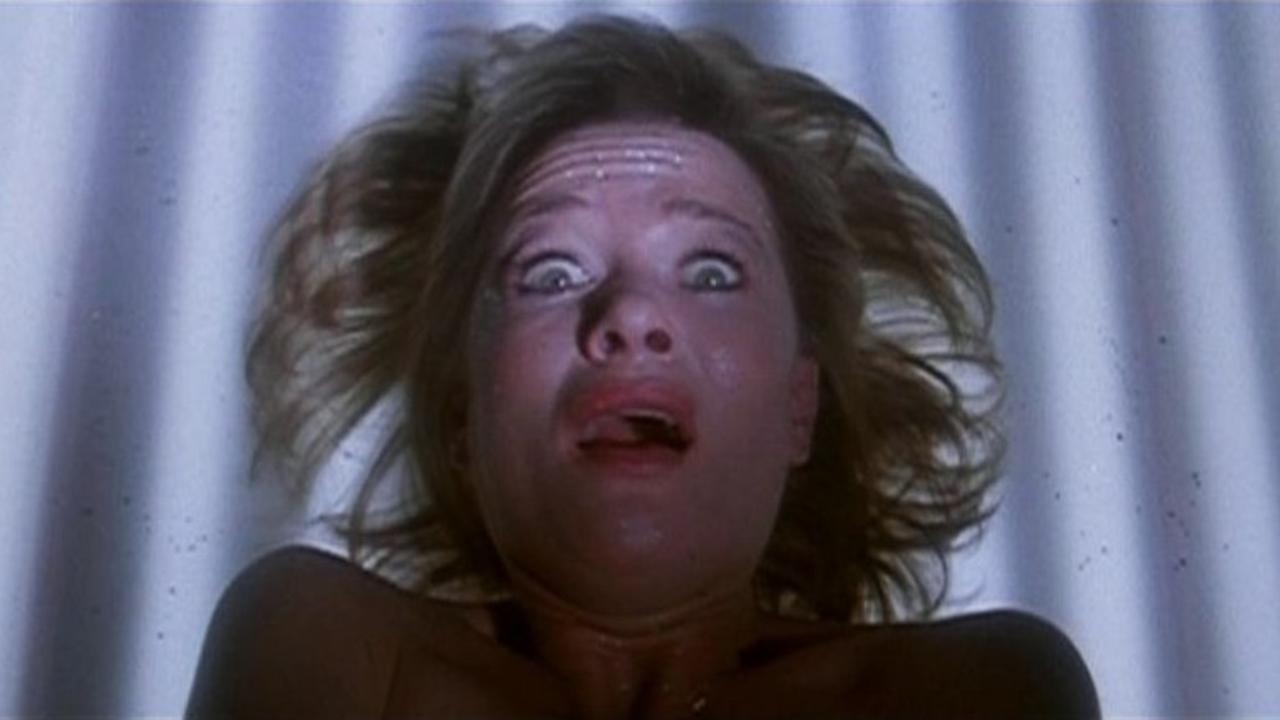
Upon its release in 1980, the British film Inseminoid caused a stir. Not only because of similarities to Alien, but because of its depiction of the female gender and the pregnancy at its centre.
In the future, a team of zeno-archaologists are excavating the ancient ruins of an alien civilisation on a distant planet. Things take a turn for the horrific when alien crystals begin to influence members of the team and accidents occur as a mysterious alien intelligence begins to make itself known. The primary turning point comes when a surviving alien creature appears, killing one of them, and raping Sandy, impregnating her with an alien-human hybrid pregnancy.
The alien in Sandy’s womb grows at an accelerated speed. Under the influence of the alien conciousness, she transforms into an aggressive and murderous being herself, who kills to protect her growing alien young. Twin alien-human hybrids that are eventually born.
During the production, actor Robin Clarke’s ego would prove as destructive as any alien beast, and the damp, cold, narrow and unstable Chislehurst Caves location made the shoot itself a trial for all involved. The damp attacked the equipment necessitating constant repairs, and the cast and crew complained constantly of claustrophobia and illness. The joys of low-budget film-making.
Despite receiving many a severe bashing from critics upon release for its questionable performances, cheap production values, and disturbing story, Inseminoid has stood the test of time and continues to be viewed, discussed, and analysed to this day.
2. Alien 2: On Earth, A.K.A. Alien Terror (1980)
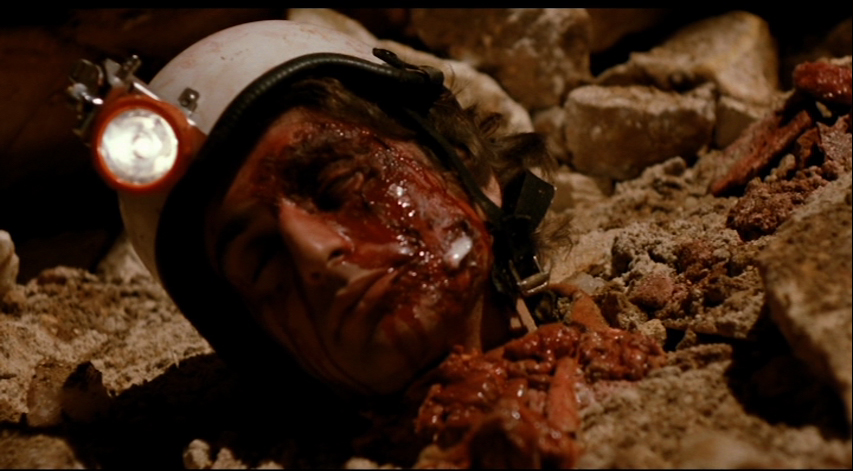
There was a long tradition of unofficial Italian sequels to successful American movies by the time Alien 2: On Earth was released. Usually they were just B-movies with similar themes churned out as cheap cash-ins with the name of their more successful precursors slapped onto their posters and VHS covers, such as the more well know sequels to George A. Romero’s Dawn of the Dead.
Alien 2: On Earth was released in 1980 in theatres in Italy. It was later released strait to video in the US under the less contentious title Alien Terror. Its muddled plot follows a team of cave explorers who meet gruesome ends in the depths of a network of caves. On the way to the cave one of them finds a luminous blue rock and pockets it. The rock, we learn in a long prologue, was brought to earth by a doomed mission from Mars.
Thelma, a young woman possessed of unexplained psychic abilities à la Stephen King, has had a premonition of doom, but still accompanies her friends into the cave. Of course. The blue rock, we discover, is an egg, and it releases a creature which impregnates one of their number. An alien creature gestates inside the victim, and bursts not from her chest but from her face.
The creature then changes form and grows into a horror which hunts them one by one until Thelma and one other survivor, Roy, escape the cave, only to find that the outside world has been taken over by the aliens, in an twist-ending familiar to fans of Italian zombie movies.
3. Contamination: Alien on Earth, A.K.A. Toxic Spawn (1980)
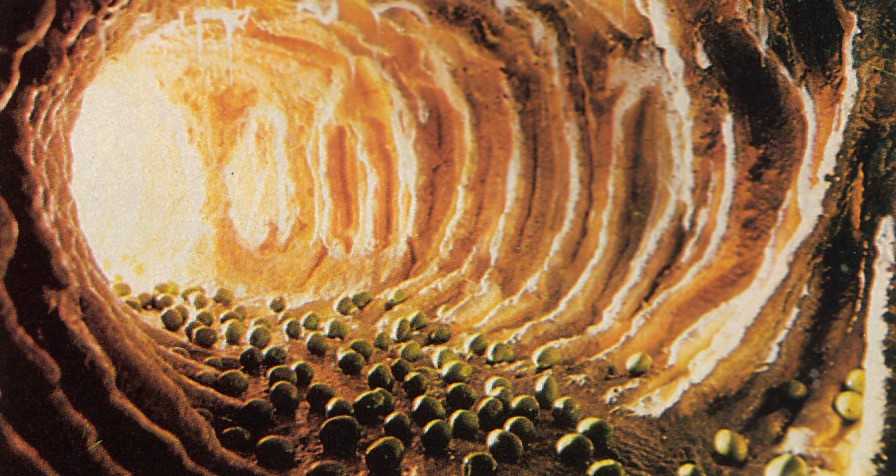
Director Luigi Cozzi, fresh off the set of Starcrash (a cash-in of Star Wars), began working on a script entitled Alien Arrives on Earth, an obvious cash-in on Alien. Little remained of that original concept by the time the film went into production. Due to budget cuts the setting was moved to earth, and it took on a convoluted espionage narrative, retaining its debt to Alien mostly in its familiar-looking eggs and imitation of the famous chest-bursting scene.
An abandoned cargo ship drifts into the New York harbour, its hold containing a hidden cargo of alien eggs and the mangled remains of its crew. The eggs, we learn, release a spray of slime which infects its victims with alien spores. In time the spores release themselves by exploding the body of the victim in a gruesome display so graphic qualified the film as a “video nasty” in the UK upon its release there on VHS.
Stereotypical New York cop Tony, and a traumatised alcoholic survivor of a doomed mission to Mars, Commander Hubbard, team up to trace the shipment of alien eggs back to Colombia, where they find another survivor of the Mars mission alive and under the control of an alien plotting to destroy humanity with its dangerous eggs. The monster, when finally revealed is less like a phallic Giger creation, and more like a horror from a H.P. Lovecraft story: a tentacled monstrosity with a single Cyclops-like eye.
Of particular note is the score by the early electronic band Goblin, famous for their eerie and disturbing score for Dario Argento’s horror classic Suspiria.
4. Galaxy of Terror (1981)
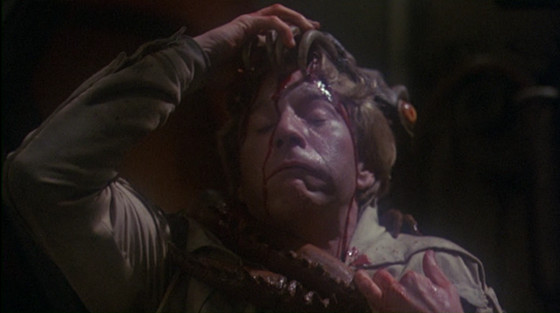
Galaxy of Terror, more than any of the films on this list, is the one that stands out both in terms of originality. Produced by Roger Corman, the film features the special effects and design talents of a young James Cameron, who would eventually go on to direct Aliens, the blockbuster sequel to Alien.
Among the cast we find post-Happy Days Erin Moran, pre-Nightmare on Elm Street Robert England, eventual David Lynch regular Grace Zabriskie, and veteran actor Ray Walston (South Pacific, My Favourite Martian).
A starship named Quest is sent to the dark planet Morganthus to investigate the disappearance of another ship. Upon arrival in orbit the Quest is pulled to the surface by an unknown energy force. Unable to take off , they investigate the ruins of the missing ship and lose a crew-member to some kind of creature.
When they discover the source of the power that holds them, they find an enormous pyramid. They enter the ancient structure to investigate the power that keeps them captive, where one by one they fall prey to a variety of beasts and pitfalls we will learn are drawn from their own darkest fears. They have been led into a trap by a mysterious being named the Planet Master.
You might be wondering why this original sounding film is on a list of Alien rip-offs. While it lacks the familiar story, it possesses the familiar design and tone of Alien. There are long, dark spaceship corridors, a dark planet adorned with derelict starships, and a bestiary of sexualised critters including phallic snakes more disturbing than those in Prometheus and a giant maggot with a desire for human females.
The giant pyramid at the centre of the action could have been designed by H.R. Giger himself, and is extraordinarily realised by the young James Cameron.
If you can find a copy, it’s well worth a watch for fans of the genre.
5. The Intruder Within (1981)
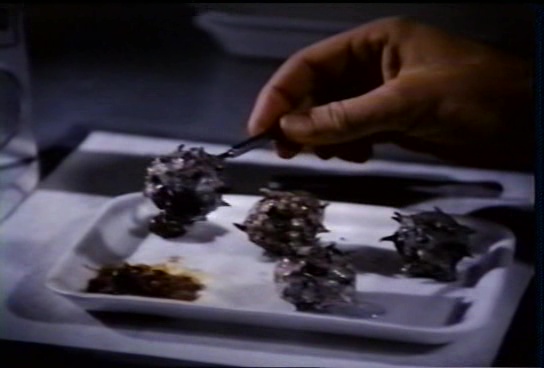
A team of blue-collar workers find an alien egg which unleashes a deadly creature that hunts them down one by one. Sound familiar? This time we’re not in space, but at sea, and instead of a commercial towing starship, we’re on an oil rig.
The 1981 TV movie The Intruder Within shares the basic plot-points of Alien, but rearranges them, in ways Ridley Scott would do so in his prequel Prometheus much later. Similarities include a crew-member going mad after being infected by alien organic matter, a snake-like creature, and an infected crew-member having sex with and impregnating a female colleague with the larval form of an alien.
Back to Alien now, the creature in its final form bursts from the woman (we see this only in shadow, after all you can’t do that on TV in the 80’s), and proceeds to hunt down the rest of the crew before it is defeated.
The Nostromo in Alien was very much like an oil rig in space, so the setting works as a stage for claustrophobic horror, and the cinematography serves this sense of doom and menace well, but the hammy performances and weak special effects prevent the film from rising above its B-grade status.